I have been paddling since 1994 and paddling surfskis since 2003. It safe to say I have had a lot of instruction from various ACA/BCU instructors where I did receive my BCU Star 3 award and I took the training for BCU Star 4 in my sea kayaking days along with the ACA open water certification. The ACA (American Canoe Association) will adopt a new discipline in 2017 to their programming, you guessed it, “Surfski Paddling”. I am looking forward to going through this certification and seeing how it will be taught. I have given many lessons over the years and the beauty of being an instructor is learning from the better or different instructors in how they teach. One of the items will certainly be the forward stroke. This off season, I am trying to change my stroke for the 2017 racing season.
My stroke has change/evolved a few times over the years. I believe I actually had a better stroke years ago when I modeled my stroke after watching the Brent Reitz video. Brent was the first person to put out a video on the forward stroke. He taught the stroke using the “chicken wing set up” for the forward stroke. So for a few years, before I had any video of myself, I patterned my stroke after Brent’s. Then I read the Barton Mold where Greg talked about the shoulder lift in regards to lifting the blade out of the water on the exit. So for a few years I practiced this method while watching some K1 flat water style strokes. This led me to my current stroke that I used over the years. We all know now that the K1 stroke used for flat water paddling is not exactly the same as a surfski stroke though obviously they share many of the same components.
Below is yet another video of myself taken last weekend with a group of novice/intermediate and advance paddlers(Tim D and I). I shot the video to see how much I had improved on my stroke since working on it for a month. My impetus for more stroke improvement is to become a more efficient paddler and racer. I know I am losing some efficiency on every stroke. In my younger years, I could often make up for lack of technique through fitness and my rough water skills. No longer. As I age, I need to improve my technique hence this article that may help other paddlers.
Off season is the ideal time to work on your stroke. It is very hard to work on it during the race season, since the priority is often different. Video is instructive and this tells me I have much more work to do. I enjoy winter paddling almost as much as summer paddling. Safety is the priority however, in Winter paddling: more stable skis, drysuits, pogies, leashes and rudder lines check on ever paddle, high Visable PFD’s with pocket for phone, spare gloves, hat, VHF. Also, tight group paddling with communication, along with knowing the skill level of the individual paddlers within the group are keys to making winter paddling safe yet fun.
So we know the best place to work on your stroke is on a stable platform(ski) on flat water. I have both available to me, however, I was excited to paddle with the group and see not only my stroke but allow the new paddlers, Mike and Rob a glimpse of their strokes. That is my caveat, so read on.
November Training Paddle from Wesley Echols on Vimeo.
What needs improvement?
1. Head/chin up to scan the horizon and for better balance and waves riding. My chin is often too low. This is a habit I developed early on in surfski racing from constantly looking at my GPS on my foot strap. Solution take the GPS off or just put it on my wrist so I only occasionally look at it.
2. My elbows are too high leading to fatigue by having my shoulders always stressed as opposed to being relaxed. While I have built excellent shoulder strength over the years, this is not the most efficient way of paddling. Secondly, since my elbows are so high, my catch is being shortened and the entry is not close enough to the ski since my hands are positioned too high when the blade enters the water. I need to drop my elbows and still get a vertical stroke by a using more of a “chicken wing set up”. This is a very old reference since many paddlers may have never seen the Brent Rietz video.
3. Blade is not buried deep enough on catch. Right side in particular is troublesome and as I get tired my elbows drop some but I ofter still am not getting the blade deep enough for a more powerful stroke. Solution: put tape on throat of blade so more obvious when buried, slow down stroke rate, make sure I rotate the 60 degree angle of blade completely before I pull back on the blade at the catch. It is easy to get sloppy. I also lengthened my paddle to 210.5 to 211. For years I used 207 cm to 209 cm depending on the particular ski or conditions I was in. I also now switch between a Jantex Gamma Mid and a Jantex Gamma Rio Small Mid Plus depending on the my fatigue level and the race distance. The Rio is smaller, so I tend to get the blade buried more and have I smoother stroke especially in the later stages of a long race using it.
Other comments worth noting:
1. My boat set is good: leg length, boat fit with or without padding depending on the ski. I have paddled so many skis it is worth noting that I certainly would benefit by sticking to one or two models for consistency as I get older. While my stability is very good, I do like more stability in rough seas like my new Stellar 2017 SEI 2G or even my SR 2G. This can lead to a better, more confident and efficient stroke even in rough conditions.
2. In my opinion, leg drive is the difference between the varies levels of paddlers. The more leg drive you can generate, the faster you will go. The elite paddlers are cycling their legs in advanced skis much more than the mid packers like myself. So paddling a more stable ski to improve leg drive maybe the answer for many paddlers. I know many paddlers who can generate power paddling with less than optimum leg drive due to their fitness level and rough water experience. I am in this category. Now, however, my strength to power ratio has declined so I need to focus more on leg drive and technique than before to compensate for father time. Oh, yes, strength training is part of the off season program as well but when I am in the ski, leg drive and improved technique are the keys to me having a better season next year along with some other improvements.
So as you can see from this video and other race video, my stroke needs some work. I am not shy about taking lessons or asking my paddling buddies for feedback so I can improve. This only helps me in helping other paddlers that I give lessons too or giving the tip or two in group paddles to newer surfski paddlers or intermediate paddlers who are open to improving their stroke. It is very helpful to routinely video yourself to see if you are improving. I thought my stroke in this video would have been much better, having worked on it over the past month. While I have improved some, you and I can see I have a ways to go. Doing intervals at race pace, you can quickly fall back to old habits so video at a slow, intermediate, and race pace is helpful.
Lastly, I have developed a mental image of what a great stroke looks like. How? I watch video of Sean Rice racing as I do my Concept 2 Rowing erg workouts. There is plenty of video of Sean for extended periods with him leaning forward with a long stroke, arms symmetrical with his legs pumping away! While I seriously doubt my stroke will ever look as good as Sean’s, at least in my mind I will be saying, “Look like Sean, Look like Sean”. Visual imagery. Good stuff. I like the video below of Sean and Jasper and Dawid since the photographer’s boat is so close and the stay on these guys more than 5 seconds. The other great video is the 2015 ICF Surfski Champs in Tahiti. This 2 hour 37 minute video but has extended views of Sean, Cory, Jasper and more. Be sure to click on HD and maximize screen or click Vimeo for great resolution on all this videos and mine. http://www.canoeicf.com/event/2015-icf-canoe-ocean-racing-world-championships
Canadian Surf Ski Championships | 2016 from Deep Cove Kayak on Vimeo.
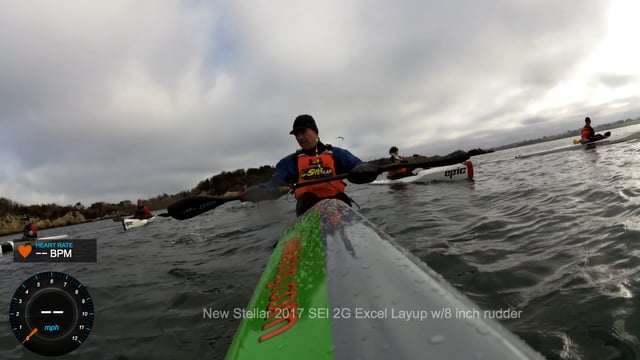
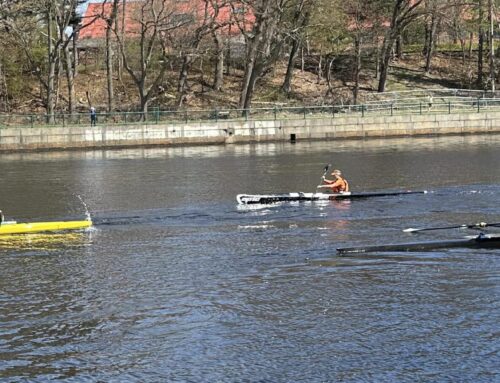
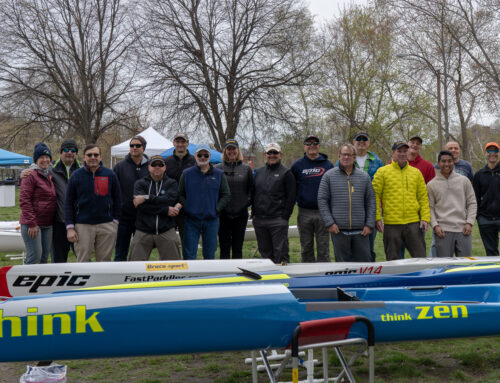
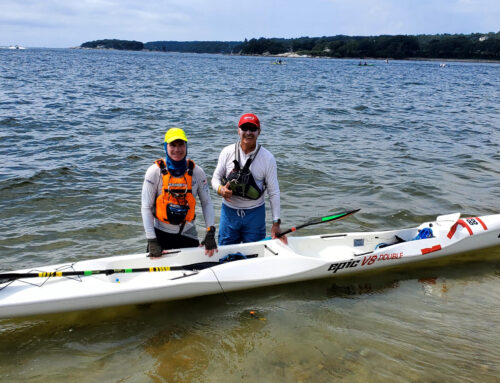
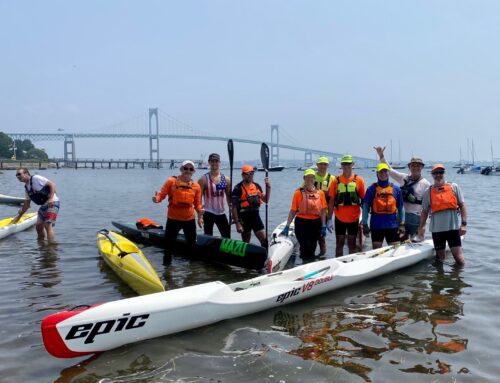
Leave A Comment
You must be logged in to post a comment.